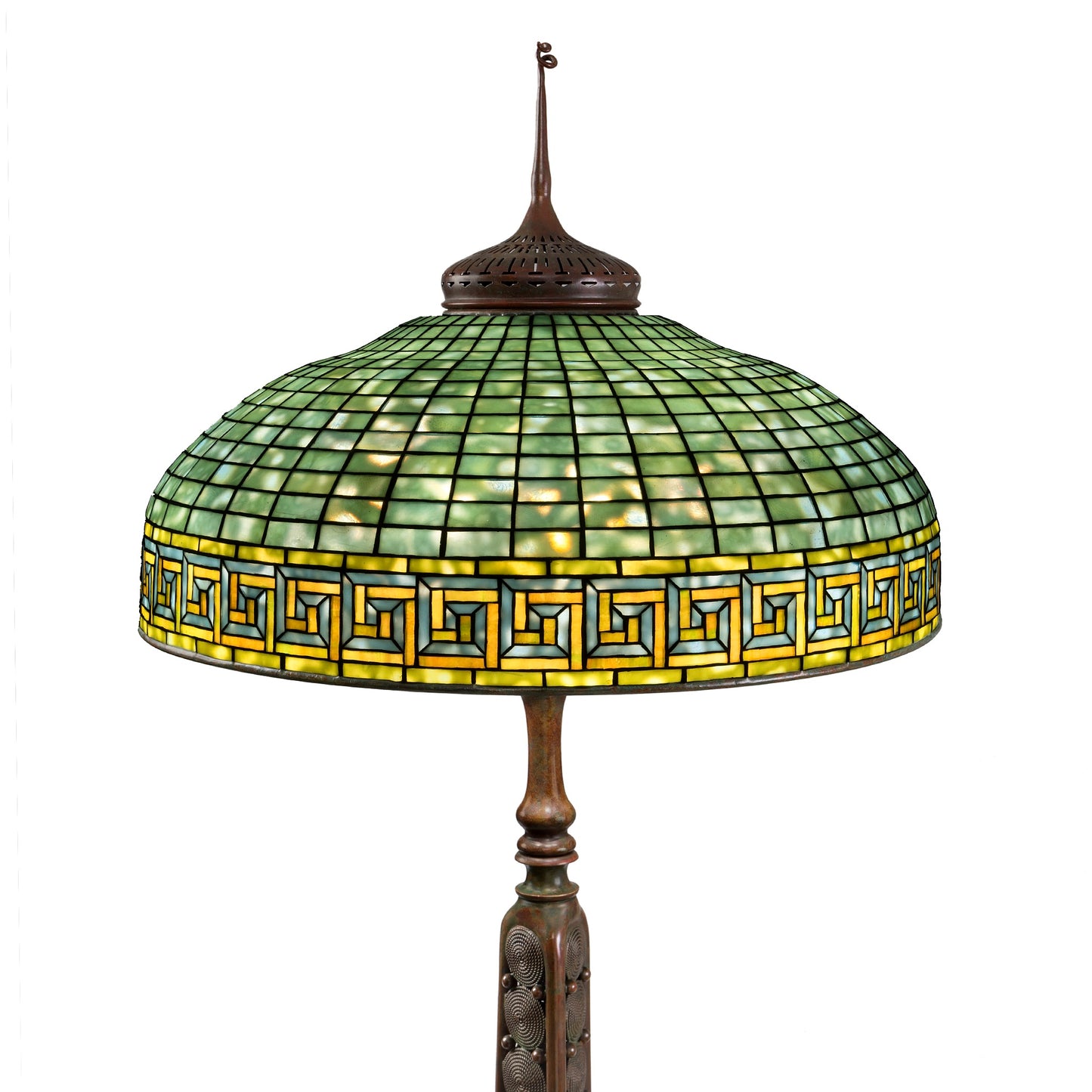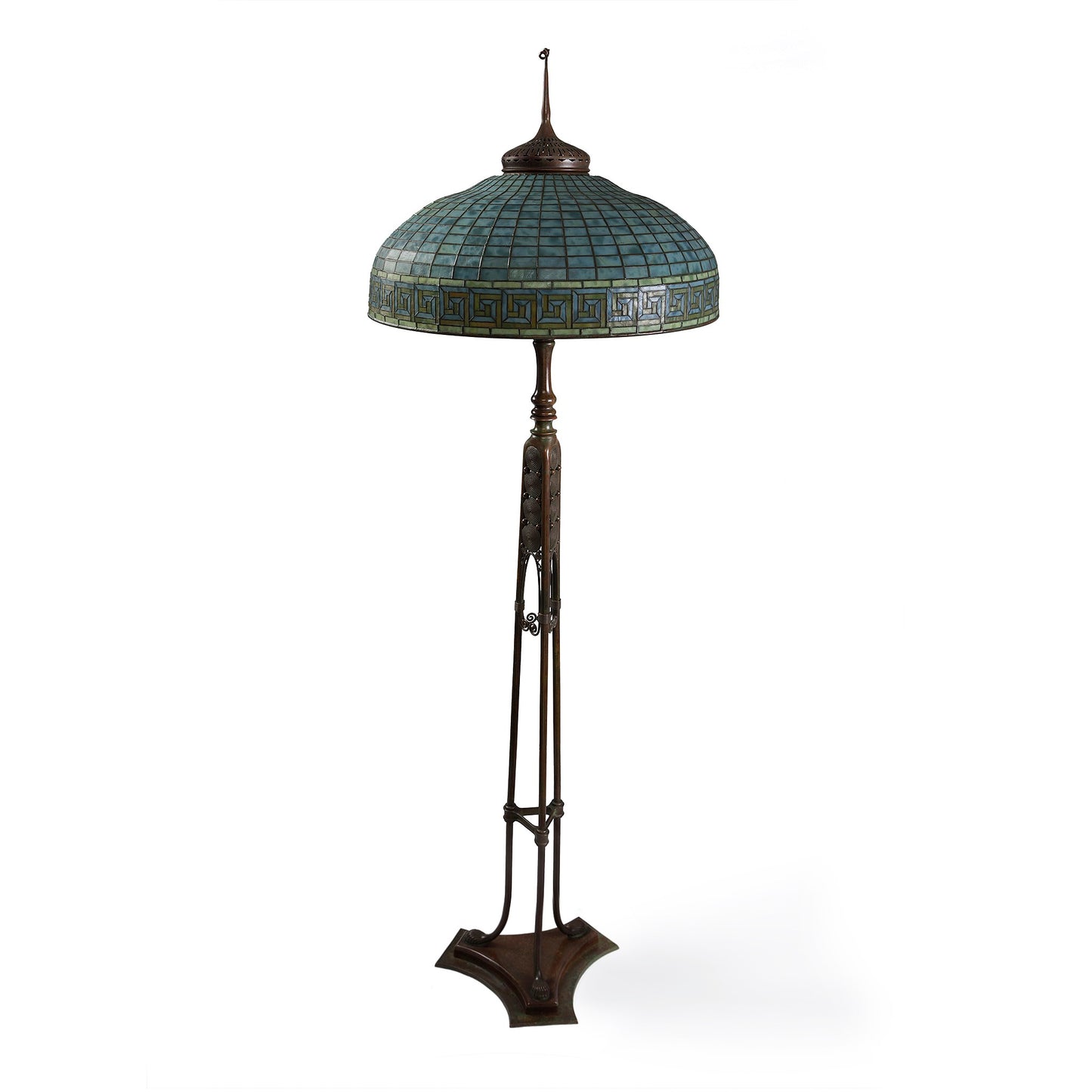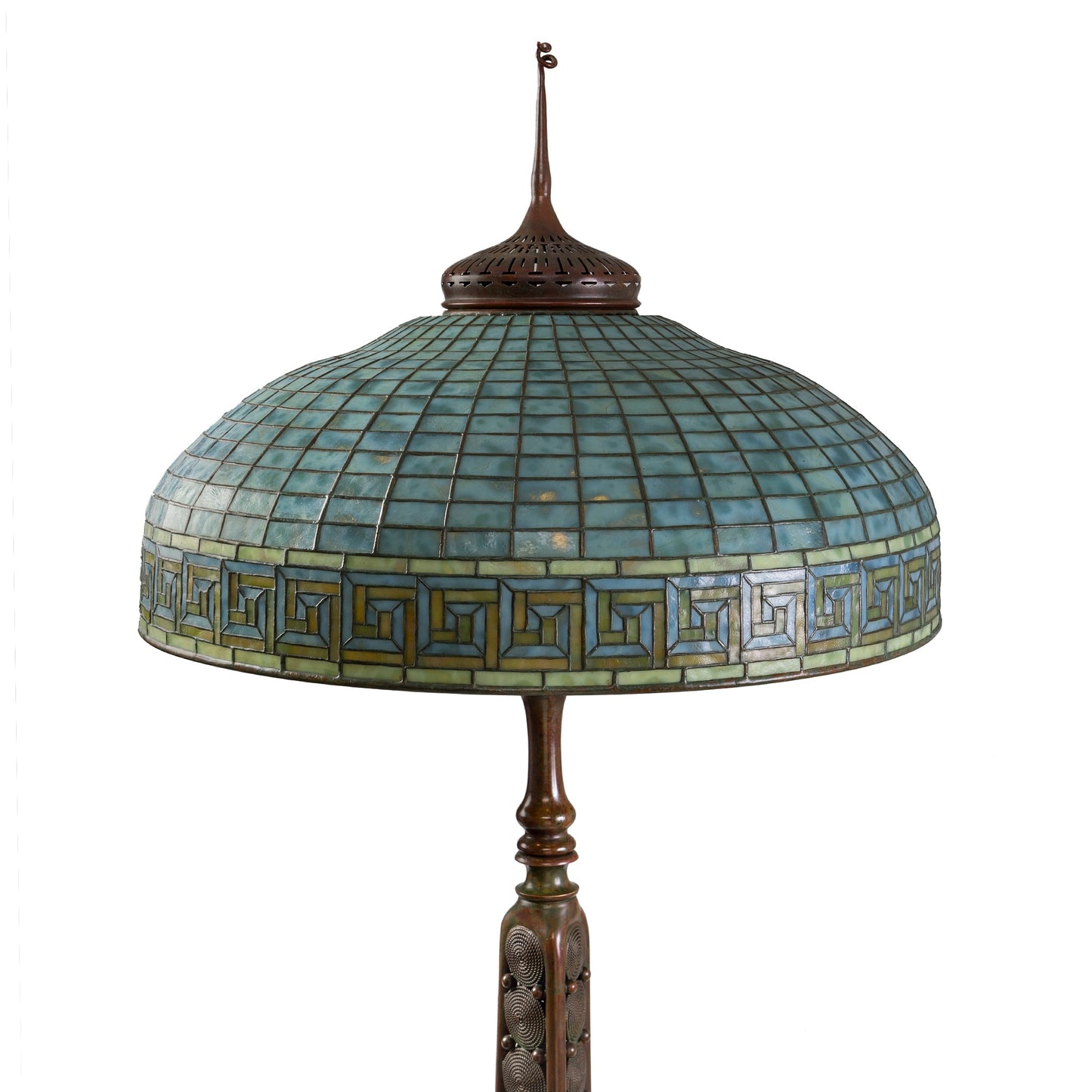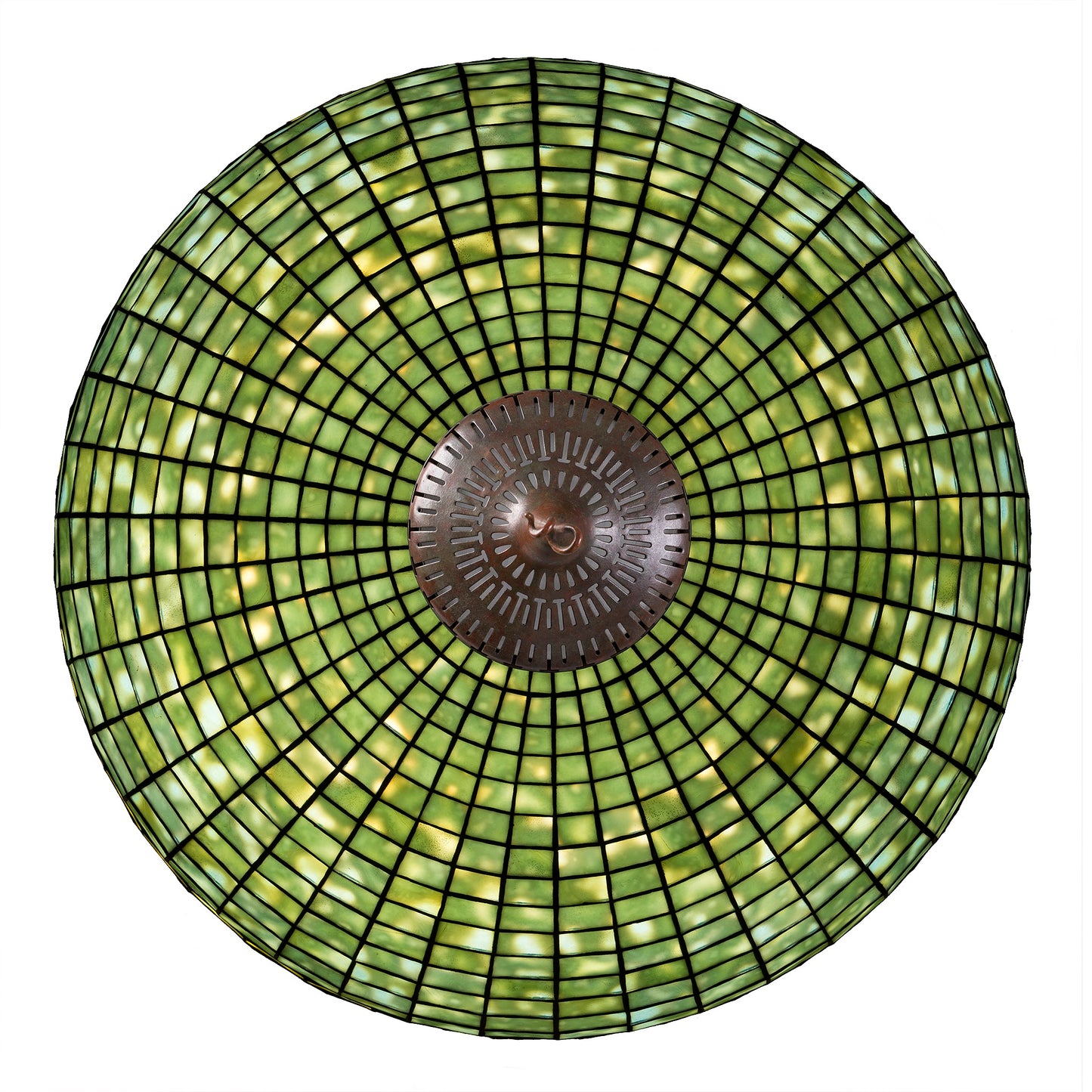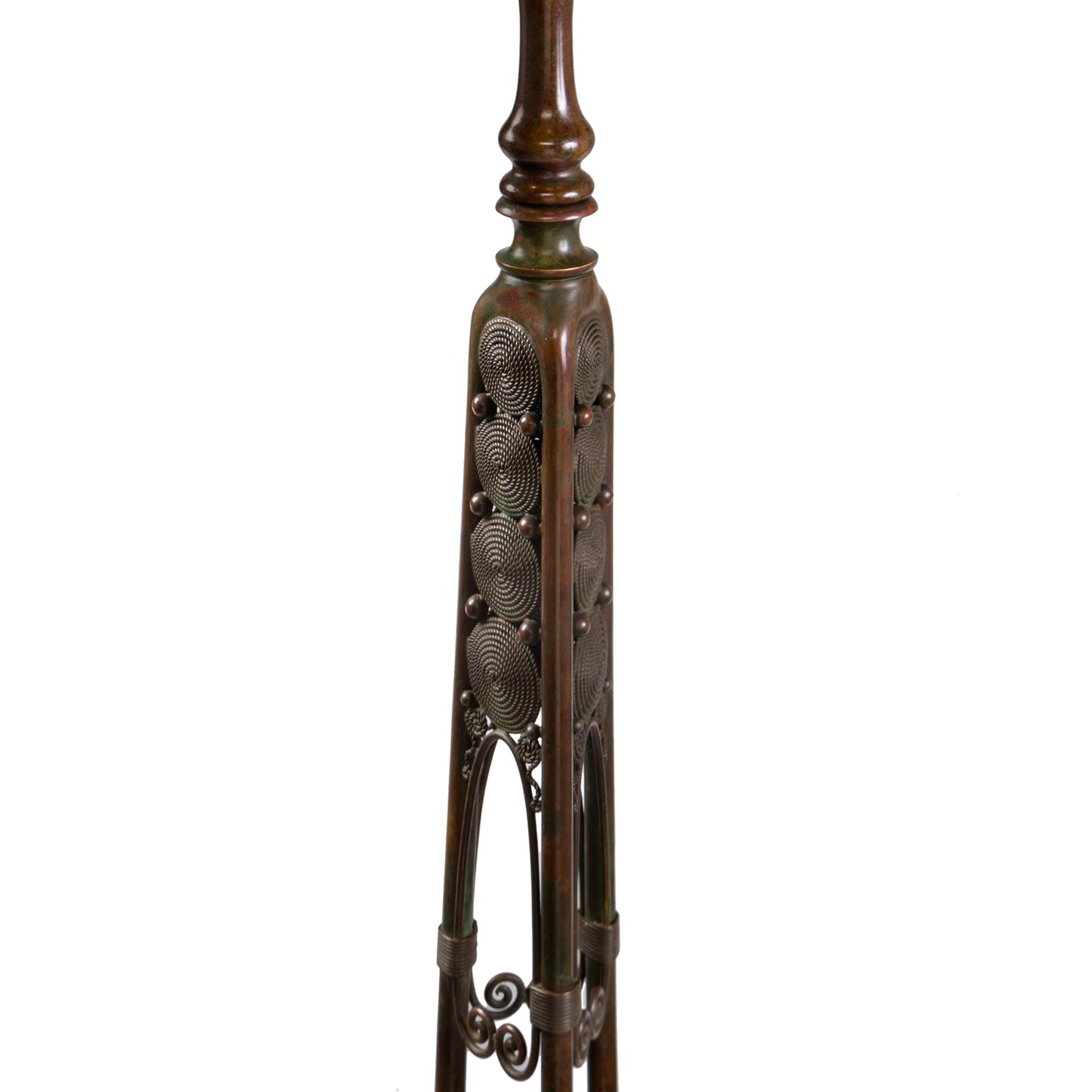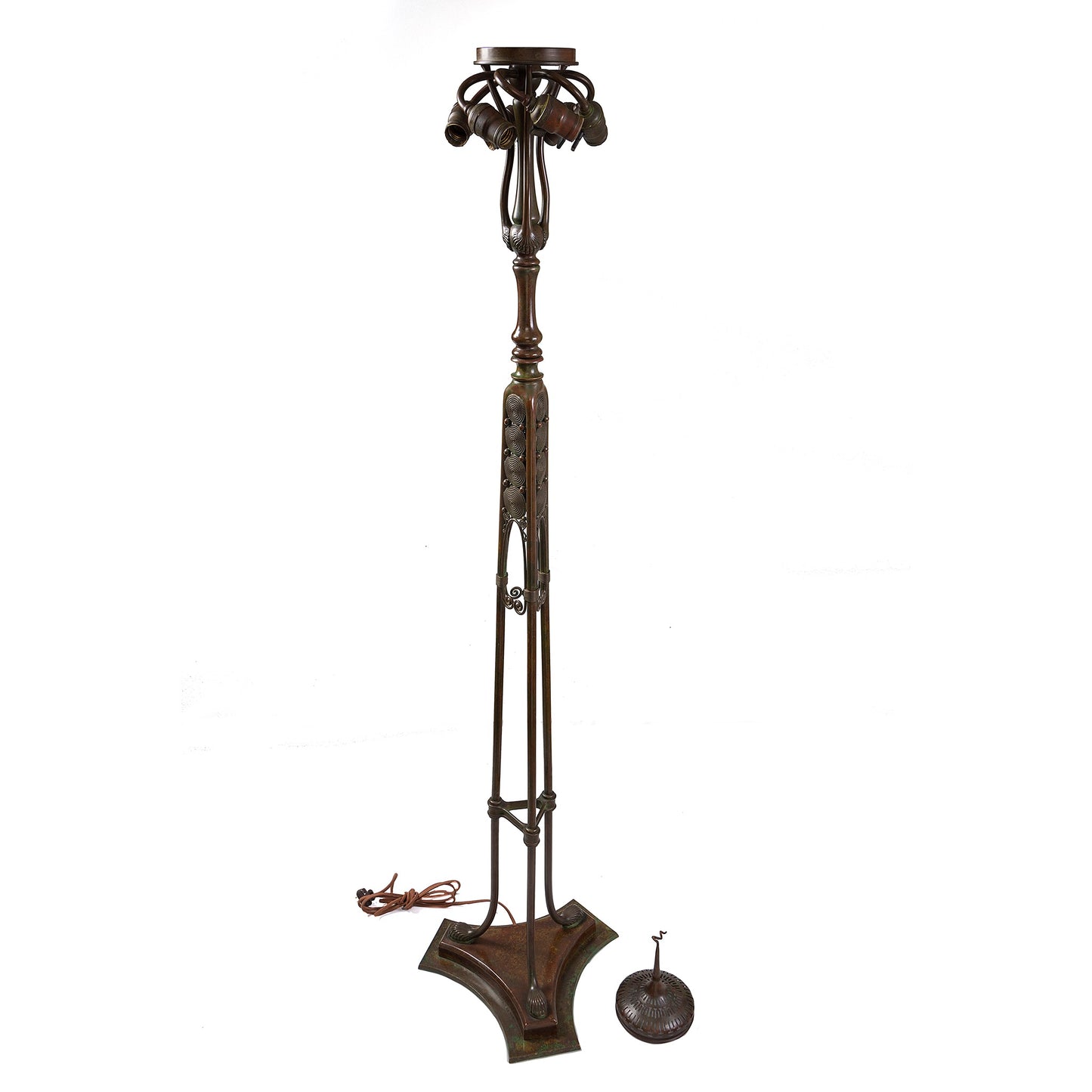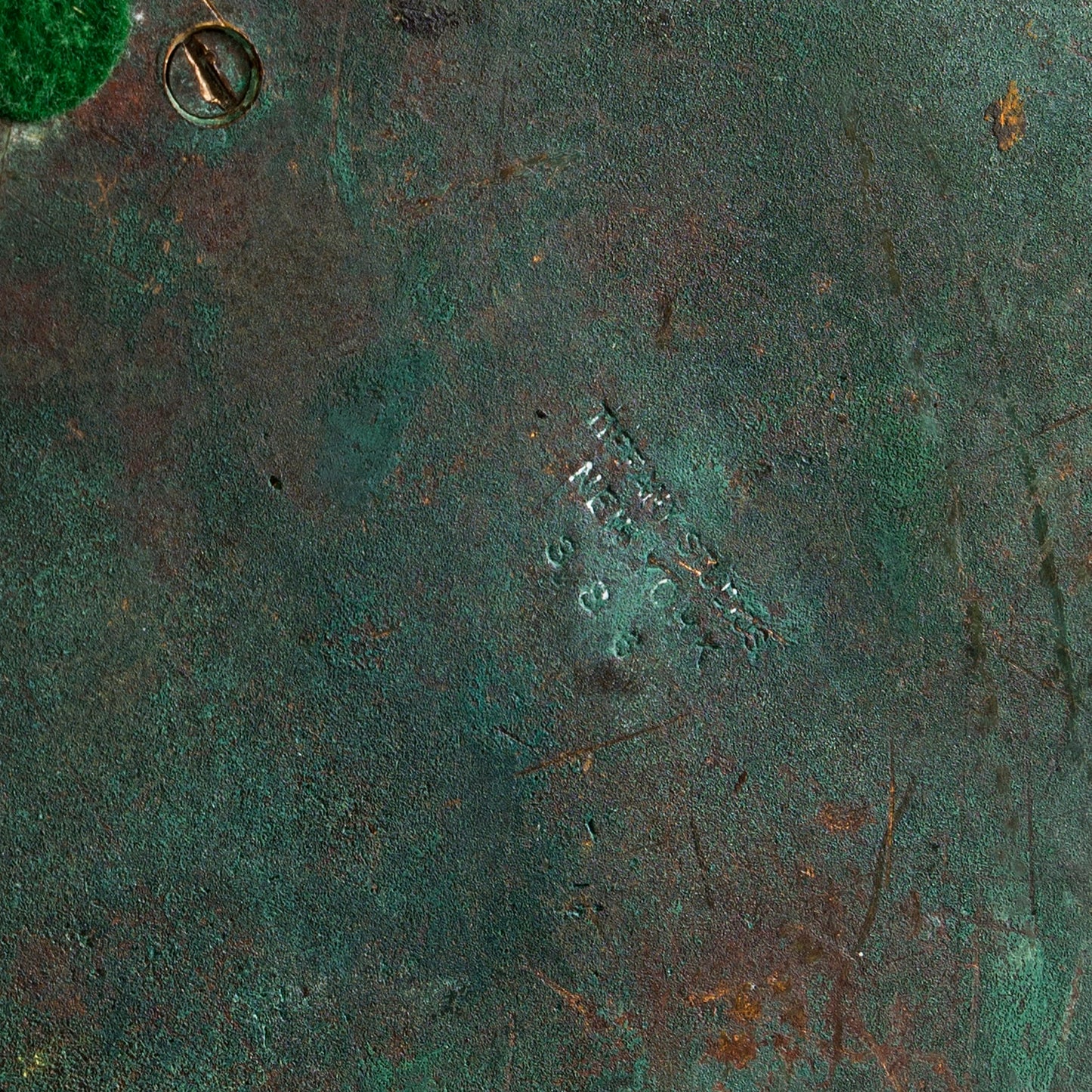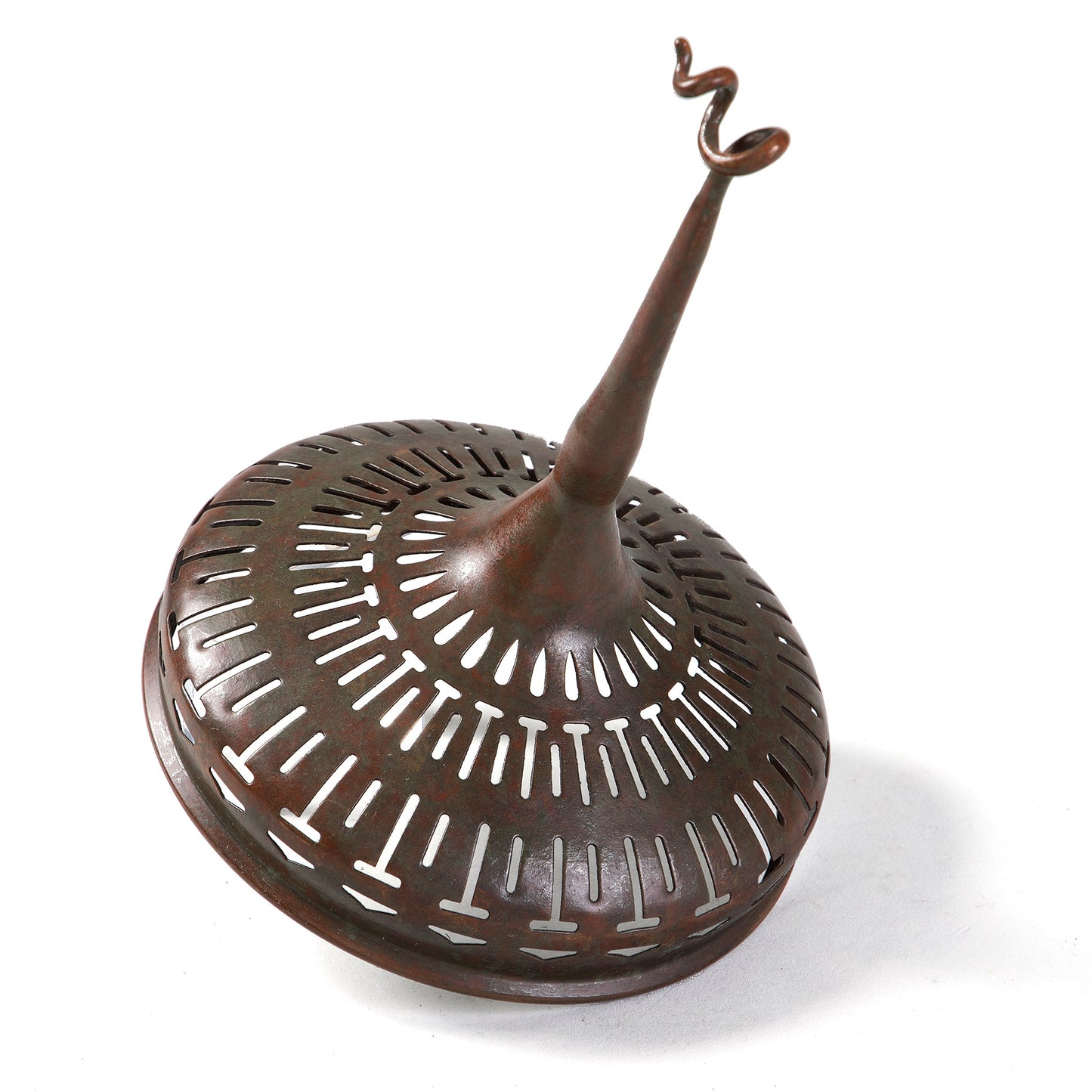Tiffany Studios New York "Greek Key" Floor Lamp
Item #: L-21583
Artist: Tiffany Studios New York
Country: United States
Circa: 1900
Dimensions: 22.125" diameter, 71.5" height.
Materials: Leaded Glass, Bronze
Shade Signed: Tiffany Studios New York 1907
Base Signed: Tiffany Studios New York 386
Literature: Dr. E. Neustadt, Lamps of Tiffany, New York, 1970, p. 35, no. 34 (base model)
R. Koch, Louis C. Tiffany’s Glass, Bronzes, Lamps: A Complete Collector’s Guide, New York, 1971, pp. 112 (base model); 134, no. 216 (for a related base model); 192, no. 16 (shade model); 194, no. 34 (shade model)
A. Duncan, Tiffany at Auction, New York, 1981, p. 220, no. 635 (base model)
A. Duncan, Tiffany Lamps and Metalware, Woodbridge, Suffolk, 2019, pp. 204, no. 795 (shade model); 232, no. 911 (base model)
P. Crist, Tiffany Lamps: A History, Mosaic Shades, Volume I, Santa Fe Springs, 2023, pp. 180, no. 6-112 (base model); 225, no. 7-117 (base model); 277, no. 9-42 (shade model)
Item #: L-21583
Artist: Tiffany Studios New York
Country: United States
Circa: 1900
Dimensions: 22.125" diameter, 71.5" height.
Materials: Leaded Glass, Bronze
Shade Signed: Tiffany Studios New York 1907
Base Signed: Tiffany Studios New York 386
Literature: Dr. E. Neustadt, Lamps of Tiffany, New York, 1970, p. 35, no. 34 (base model)
R. Koch, Louis C. Tiffany’s Glass, Bronzes, Lamps: A Complete Collector’s Guide, New York, 1971, pp. 112 (base model); 134, no. 216 (for a related base model); 192, no. 16 (shade model); 194, no. 34 (shade model)
A. Duncan, Tiffany at Auction, New York, 1981, p. 220, no. 635 (base model)
A. Duncan, Tiffany Lamps and Metalware, Woodbridge, Suffolk, 2019, pp. 204, no. 795 (shade model); 232, no. 911 (base model)
P. Crist, Tiffany Lamps: A History, Mosaic Shades, Volume I, Santa Fe Springs, 2023, pp. 180, no. 6-112 (base model); 225, no. 7-117 (base model); 277, no. 9-42 (shade model)












